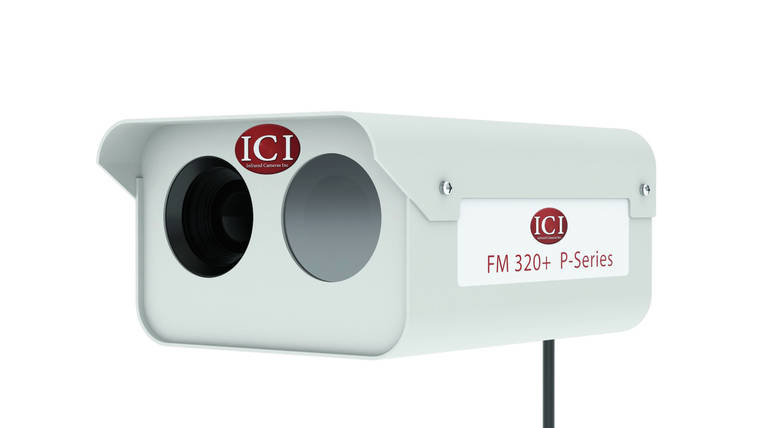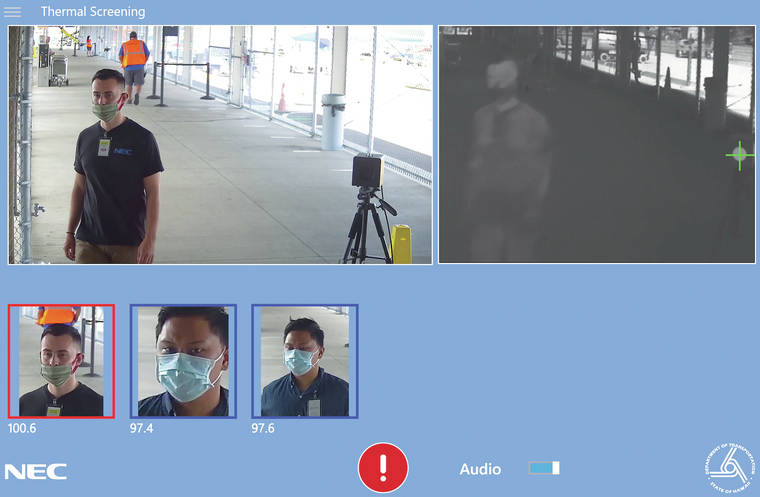HONOLULU — The Hawai‘i Department of Transportation (HDOT) has selected NEC Corporation, NEC Corporation of America and their partner, Infrared Cameras Inc., to provide thermal temperature screening and facial imaging technology at Hawai‘i’s public airports to help protect the community and identify passengers with a potentially elevated body temperature. The companies combined resources to submit a unified proposal for the project.
“Taking these steps to implement the technology at our airports shows our commitment to providing preventative measures against COVID-19 for the community,” said Gov. David Ige. “We recognize that temperature screening won’t catch every infected passenger, but it is an available tool that can be implemented and combined with the additional measures the state is providing to help prevent the spread of this virus while helping rebuild the economy.”
NEC Corporation’s Chief Experience Officer and Senior Vice President Raffie Beroukhim said the objective is to help with the health of the residents of Hawai‘i with the COVID-19, and have a hand in opening the tourism and revive the state’s economy while ensuring the passengers feel safe and healthy.
NEC and Infrared Cameras were selected with a proposal of $23.3 million for equipment and installation and a 10-year maintenance plan of $1.42 million annually for a total contract amount of $37.5 million.
The companies were selected in part because of their innovative concept and functionality to deliver accurate and efficient thermal temperature screening for people traveling to Hawaii.
The selection committee evaluated four systems and technologies and NEC and Infrared Cameras were determined to be the best fit for Hawaii’s needs.
“We did not break down the cost for each airport, but Lihu‘e Airport has 10% of overall numbers of cameras, and 50% into Honolulu airport,” said Beroukhim.
The thermal temperature screening equipment will be installed immediately at the Daniel K. Inouye International Airport (HNL), Kahului Airport (OGG), Lihue Airport (LIH), Ellison Onizuka Kona International Airport at Keahole (KOA) and Hilo International Airport (ITO).
Phase 1, which will be completed by July 31, will have the temperature scanners installed this month at the gates currently being used for arriving trans-Pacific flights.
Phase 2, set for completion by Aug. 20, will have the temperature scanners installed at the remaining gates in the coming weeks.
Phase 3 expects to have the facial imaging equipment installed by December 31.
Beroukhim said NEC Corporation will provide the necessary resources to train airport personal and confirmed the equipment was easy to use.
“It’s easy to use the application, touchless and does not require interaction or physical interaction,” said Beroukhim.
While the Hawai‘i airport system will leverage facial imaging technology, people should not think of the features they may have seen in a movie. The system incorporates privacy protections from design to deployment and NEC will work with HDOT throughout this process to ensure the solution meets the requirements of the state.
Furthermore, the system will only temporarily retain a picture of a person with an elevated temperature of 100.4 degrees and above to help airport representatives identify them and conduct additional assessments to determine if health precautions are necessary. The picture will be erased within 30 minutes and will not be shared with any outside agencies.
The system will not have a person’s personal information, such as their name, address or driver’s license number. It will not contain information about criminal history or outstanding warrants.
“We would like to remind this solution has been built with privacy in mind. I know there are concerns with facial tracking, this is anonymous, only for the individual at that airport, touchless, data not shared, built with privacy in mind,” said Beroukhim.
The use of the thermal image capture technology is anticipated to be safer and more cost-effective than manual temperature checks. Without the use of facial imaging technology, an employee would need to be next to each camera at all times to pull a person aside as they walk by the camera, creating bottlenecks and further exposing employees to travelers and, thus, possible COVID-19 infection.
According to NEC Corporation of America, as far as how many times an individual will be screened for their temperature during changes of their flight is up to each of the airports and could not be determined at this time.
Beroukhim said Hawai‘i’s airports are the first to use their products, but well-known companies such as Amazon, Ford Motors, Casinos, and hotels also use their technology.
Beroukhim said this project was a team effort and a partnership with a few Hawaii local businesses.
“We rely heavily on local Hawaiian businesses like Data House Inc. and Communications Consulting Services, Inc.,” said Beroukhim. “Also, Wasa Electrical Services, Inc. for their electrical services for their long term support of this contract.”
•••
Stephanie Shinno, features and community reporter, can be reached at 245-0424 or sshinno@thegardenisland.com.



